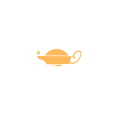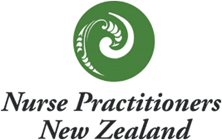Jane Sutton NP Acute & Chronic Pain
Jane is a NP working in the area of Acute and Chronic pain at Counties Manukau DHB. She has been qualified as an NP for just over a year. For the past 14 years she has been working as a CNS within various pain services both here and in the UK.
Her role at CMDHB is divided equally between the inpatient and outpatient settings. She runs a nurse led clinic, following up Complex pain patients post hospital visit and also runs an opioid weaning clinic, liaising closely with Community Alcohol and Drugs Services (CADs) as required. Jane also spends time providing education at Auckland university-post graduate nurses, primary care settings/PHO’s and providing pain education to trainee doctors.
Jane has had an interest in the safe management of opioids for many years now, particularly following her involvement with the HQSC opioid collaborative. A further special interest is preventing the transition from Acute to Chronic pain and bridging the gap between pain management services and primary health care.
ABSTRACT
Title: Changing prescribing behaviours, opioids in PHC
Chronic pain is a common, complex, and challenging condition, where understanding the biological, social, physical and psychological contexts is vital to successful outcomes in primary care. In managing chronic pain the focus is often on promoting rehabilitation and maximizing quality of life rather than achieving cure (Gordon et al, 2017).
The number of opioid analgesics prescribed in New Zealand for non-cancer pain over the past few years is on a steadily upward trajectory. The number of people in the community given opioid’s at least once in a year has gone up, from 63,000 people in 2011 to 77,000 people in 2016 (HQSC, 2017). Alongside this, the numbers of harms/deaths reported to involve opioid’s are rising as well, particularly in the elderly population (HQSC, 2017).
Opioid analgesics have been shown to have very little benefit in the treatment of chronic pain and are associated with significant side effects, so why do the numbers prescribed continue to rise and with a disproportionate amount in areas of higher deprivation?
If this is to be addressed there must be focus on changing prescribing behaviour so that fewer patients with chronic pain are started on opioids, but also the large numbers of those currently receiving these drugs are properly assessed and where there is no evidence of significant benefit, support to stop or at least reduce, is provided. This is likely to require a multidisciplinary approach with input from pain specialists, addiction services, mental health, and peer support groups (Brinksman, 2017).
My presentation will outline the latest evidence in regards to opioids and chronic pain. The current best practice guidelines for de-prescribing /opioid weaning. An opioid reduction success case study. And some helpful tips for managing this complex patient group within the primary healthcare setting.
References
Health and quality commission NZ (HQSC) (2017), Atlas of healthcare variation. URL: https://www.hqsc.govt.nz/our-programmes/health-quality-evaluation/projects/atlas-of-healthcare-variation/opioids/#[REFERENCES]
bpacnz (2014) Identifying and managing addiction to opioids. Best Practice Journal 64. URL: www.bpac.org.nz/BPJ/2014/October/opioid-addiction.aspx.
Brinksman,S (2018) Opioids and chronic pain in primary care, The British journal of general practice : the journal of the Royal College of General Practitioners, volume 68 issue 675 pages 454-455.
Gordon, Katy, Rice, Helen, Allcock, Nick, Bell, Pamela, Dunbar, Martin, Gilbert, Steve & Wallace, Heather. (2017). Barriers to self-management of chronic pain in primary care: a qualitative focus group study The British Journal of General Practice, 67(656). doi:10.3399/bjgp17X688825
 Menu
Menu
